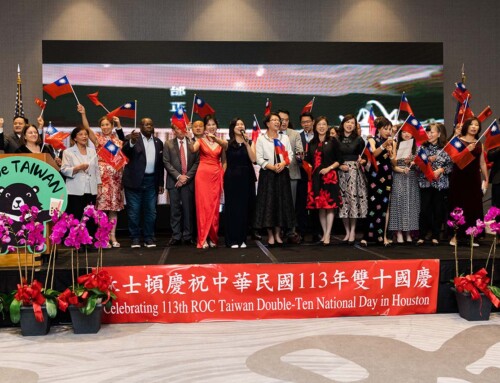 Youngblood Intermediate fifth and sixth graders dig in the dirt to harvest sugar snap peas and red beets they grow from seed.
Youngblood Intermediate fifth and sixth graders dig in the dirt to harvest sugar snap peas and red beets they grow from seed.
For the last several years, Alief ISD school students have been hard at work planting, weeding and harvesting fruits and vegetables in the Youngblood plots of the Alief Community Garden, a 6.5-acre garden across from the school on the corner of Beechnut and Dairy View.
Started in 2011, the community garden is a collaboration among the International Management District, Alief Super Neighborhoods, residents, Youngblood students, and corporate partners, including Target.
Youngblood Intermediate teacher and garden liaison Erin Rodriguez Gilbert and other volunteers designed and set up the garden as a place where students learn the valuable lesson of how to grow their own fruits and vegetables within their community, take leadership roles and put into practice STEM (science, technology, engineering and mathematics) concepts.
“The goal has always been about students (being) empowered, learning responsibility, and exercising leadership skills,” Rodriguez Gilbert says.
Students have worked on math and science skills in the garden as well as problem solving, research, and scale modeling.
The garden, which includes two plots for the school and some 80 plots it rents out to community members, also helps to address the problem of food deserts — urban areas where it’s difficult to purchase high-quality, affordable, nutritious fresh food.
“Those reliant on public transportation or who are walking can find healthy eating especially challenging,” Rodriguez Gilbert says. “Urban food desertification has a lot to do with grocers finding it more economically viable to do business in the suburbs.”
In 2021, Rodriguez Gilbert won the prestigious Rather Prize for her efforts, a $10,000 award to help improve education in Texas. The prize was created by Rice University student Martin Rather and his grandfather, retired Houston TV newsman Dan Rather. She plans to use the funds to help broaden the STEM program at Youngblood.
Since the garden was founded, students—many of whom are apartment dwellers who otherwise wouldn’t have access to a garden—have grown beets, lettuce, spinach, radicchio, tomatoes, peanuts, carrots, herbs, fennel, squash, okra, tomatillos and corn. The garden is fully organic, with no chemicals used. Students typically come to the garden during their school wellness time for 30 minutes two to three times a week.
In the classroom, students often prepare dishes from what they’ve grown, including sautéed green beans and salads. Other food has been donated to the Communities in Schools program for redistribution through a program called “Backpack Buddy,” which provides at-risk children K-12 with nutritious, kid-friendly food for the weekend.
 “It was really exciting for students to have the ability to help our own,” says Rodriguez Gilbert. “That is a really powerful feeling for students and their teacher. There’s great strength in the fellowship that occurs when families, schools, and communities come together to work towards a common goal.”
“It was really exciting for students to have the ability to help our own,” says Rodriguez Gilbert. “That is a really powerful feeling for students and their teacher. There’s great strength in the fellowship that occurs when families, schools, and communities come together to work towards a common goal.”
What’s more, community gardens increase property values.
Barbara Quattro of Alief Super Neighborhoods has worked tirelessly in the garden as well.
As volunteers worked toward a SPARK Park designation and built a pavilion for the garden, Quattro gave students a voice, letting them collaborate with community members and graduate students from the University of Houston’s College of Architecture and Design and giving them real-world STEM experience.
She’s also helped to find grants to support the garden. Most recently, the garden received a $5,000 grant from Nature’s Path, Gardening for Good. Quattro and Rodriguez Gilbert plan to use the funds to create a water feature in the garden and to put in new installations of native plants so pollinating creatures have a refuge.
The garden site also includes an orchard won in a contest sponsored by Dreyer Corporation, a tree farm, a compost bin and a certified Little Library. Twice a year, the International Management District holds events at the site, including a kite festival in the spring and a Fall Festival the second weekend in October.
Over the last few years, COVID has created challenges for the garden, but it’s still thriving. In 2020, few students were on campus and spending time in the garden, while the start of the current school year got off to a rocky start amid high COVID rates.
“But the second semester seems to be looking up,” Rodriguez Gilbert says.
She is excited about the prospect of people getting back to growing their own food and becoming closer to nature. The country started to shift away from the practice in the years following WWII as more people moved to cities. However, during COVID, there’s been a movement to get back to gardening.
“The pandemic has taught us a lot about how therapeutic gardens and gardening can be,” Rodriguez Gilbert says. “Things may be uncertain and the world can often feel like we have little control of our lives, but there are some things that hold constant such as the sun, nature, and the way hard work can feed the soul.”
She’s found that students take great pleasure in growing their own food, eating what they grow and helping others. “Students like to be a part of something that makes a difference,” she says.
It’s work that needs to continue.
“We must empower communities to make healthy decisions,” Rodriguez Gilbert says. “If we lose connections to food we lose agency. Growing food is a life skill and one that is much needed if students are to grow up and live a healthy lifestyle. Gardening teaches patience, planning, discipline, and collaboration. The opportunities for interdisciplinary learning and problem solving are infinite.”
— By Deborah Lynn Blumberg







Leave A Comment